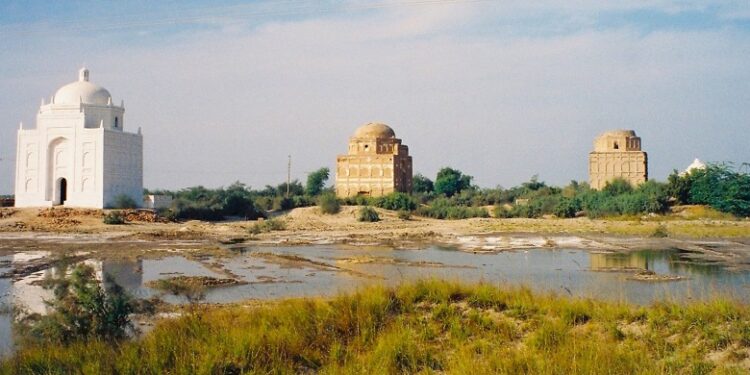
It is said that both forces fought near Lakhi and eventually the Afghan forces were defeated by the Sindhi army. The Afghans retreated from the battleground and took refuge in the Shikarpur fort.
Zulfiqar Ali Kalhoro
There are a few historical cemeteries in Garhi Yasin taluka in the Shikarpur district where there are buried Kalhora-period (1700-1783) soldiers and nobles who died in conflicts between Kalhora and Afghan forces. Two such necropolises are Bohi Quba near Dakhan village and Pir Qaim Shah Jo Muqam near Naushahro Abro. It is said that a battle between the Afghan and Kalhora forces was fought at Pir Qaim Shah near Sindh wah. That place is located 1 km east of Naushahro Abro village.
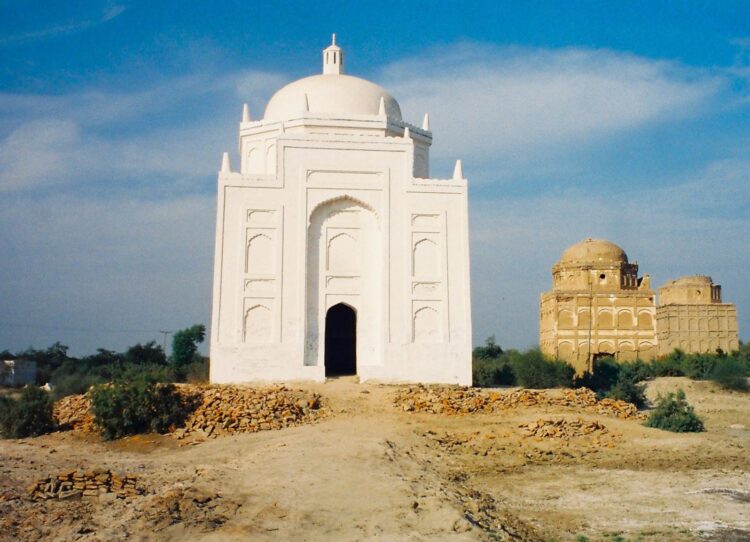
From Syed Sabit Ali Shah’s Zafar Nama, one comes to know that two battles occurred in 1193 AH / 1779 AD. The first battle was fought between Kalhora and Afghan forces in the month of Muharram 1193 AH / 1779 AD and the second in Safar 1193 AH / February 1779 AD amongst the Kalhoras forces themselves – that Mian Abdul Nabi Kalhoro won, a misleading statement by a few scholars who discussed this encounter. It was actually fought between supporters of Mian Izzatyar Khan Kalhoro, who were led by Miran Shah Malook and Mir Mubarak Khan Talpur; and Mian Abdul Nabi Kalhoro. The name of Mir Mubarak Khan Talpur appears in the genealogy of Khanani Talpurs. He was the son of Mir Aaali Khan Talpur. As per the inscription on his grave near Ram Jago in the Umerkot district, he died in 1157 AH / 1744 AD. I have visited this graveyard several times and wrote an article that appeared on 22 June 2018 in The Friday Times–Naya Daur. This means that he was not alive during that conflict. There might have been another Mir Mubarak Khan Talpur – probably from other lineages of the Talpurs – who played a leading role in supporting Mian Izzatyar Khan Kalhoro against Mian Abdul Nabi Kalhoro. Similarly, the name of Miran Shah Malook also known as Miran Shah Ghot, was from the Jhinjhan tribe.
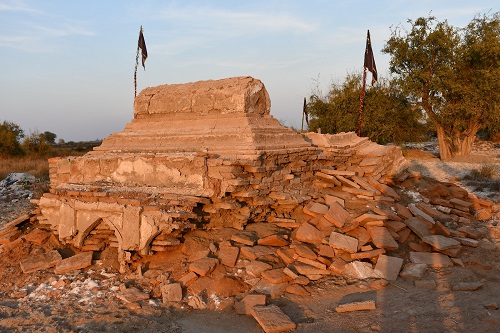
The tomb of Miran Ghot (the groom) is located in the necropolis of Jeevan Shah in Ratodero taluka who is the patron saint of the Shahani tribe of Larkana. It is difficult to say that he was the same general who supported Mian Izzatyar Khan Kalhoro. There is a popular saying in Sindhi in the Naudero area in Ratodero taluka about his fight in a certain battle. Imam Rashidi (2001:140) writes in the article “Naudery Je Barpasi Ja Goth” (“Surrounding villages of Naudero”) – which was published in the edited book Naudero: Nawan Ain Purana Waraq by Qamaruddin Qazi – that Miran Shah was killed in a certain battle after having fought valiantly. Imam Rashidi (2001) believes that he was a general of Mian Din Muhammad Kalhoro (d. 1700).
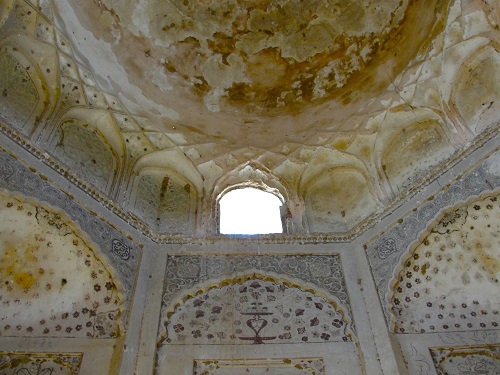
According to Ghulam Muhammad Lakho (2004:172), the author Kalhora Daur Hukomat Mian Abdul Nabi Kalhoro succeeded his brother Mian Ghulam Nabi Kalhoro and became ruler in 1777. Ghulam Rasool Mahar (1996) writes in Tarikh-e-Sindh: Kalhora Daur Vol. II that after a two-year rule of Mian Abdul Nabi Kalhoro, Mian Izzatyar Khan Kalhoro, son of Ahmadyar Khan Kalhoro and grandson of Mian Noor Muhammad Kalhoro, had parwana issued in his name as the king of Sindh from Timur Shah Durrani, Afghanistan who sent his forces to install Mian Izzatyar Khan Kalhoro as king of Sindh. Mian Izzatyar Khan Kalhoro set out for Sindh with a large number of Afghan forces. He. sent a letter to Mir Bijar Khan Talpur, the minister and general of Mian Abdul Nabi Kalhoro, to submit before him. Mir Bijar Khan Talpur declined to submit and sided with Mian Abdul Nabi Kalhoro. Mian Izzatyar Khan Kalhoro marched along with the Afghan forces to Sindh and reached Shikarpur where many other tribes and nobles, who were his supporters, joined him. Mian Abdul Nabi Kalhoro also advanced along with his ministers, nobles, generals and soldiers to Rohri and then moved to Lakhi in Shikarpur. It is said that both forces fought near Lakhi and eventually the Afghan forces were defeated by the Sindhi army in the battle. The Afghans retreated from the battleground and took refuge in the Shikarpur fort. They were chased by the Kalhora forces under the command of Mir Bijar Khan Talpur. They were arrested and presented before Mian Abdul Nabi Kalhoro who gave them respects and presents as per their ranks in Afghan forces and set them free.
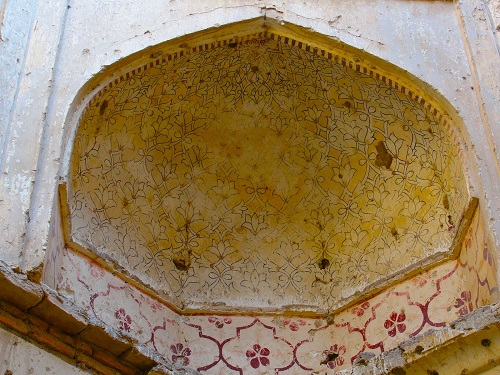
One knows from the Zafar Nama of Syed Sabit Ali Shah ‘Sabit’ (b.1740 – d.1810) that one month after a battle between Kalhora and Afghan forces another encounter took place on 20 Safar 1193 AH / 8 March 1779 AD, between two groups of Kalhora forces. Syed Sabit Ali Shah gives an account of this encounter in Zafar Nama, which is published in Kulyat Syed Sabit Ali Shah Karbali that was compiled by Mirza Abbas Ali Baig in 1984. The same information about the battle was given by Mirza Abbas Ali Baig (1980) in his book Khudayar Khani Mian Sarfraz Khan Abbasi. According to Mirza Abbas Ali Baig, after the battle between Mian Abdul Nabi Kalhoro and Izzatyar Khan Kalhoro (who was assisted and supported by Afghan forces), another conflict took place among the forces of Mian Abdul Nabi Kalhoro. Miran Shah Malook and Mir Mubarak Khan Talpur fought against Mian Abdul Nabi Kalhoro. It is said that they were also generals of Mian Abdul Kalhoro who fought amongst themselves. But it is not clear as to why they fought their king Mian Abdul Nabi Kalhoro. It appears that both Miran Malook and Mir Mubarak were probably supporters of Mian Izzatyar Khan Kalhoro. This battle was fought near Sindh wah in Shikarpur. All those who were killed in both battles were buried in different graveyards in Shikarpur and Chanduka Pargana.
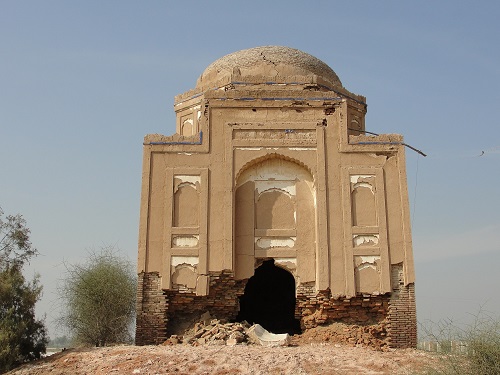
According to Tarikh-e-Sindh: Kalhora Daur Vol. II by Ghulam Rasool Mahar (1996), when Timur Shah the king of Afghanistan heard about the defeat of his 30,000 forces by only the 18,000 forces of the Sindhi army, he got angry. To avenge the defeat, Timur Shah Durrani marched to Sindh and reached it in 1194 AH / 1780 AD. Mian Abdul Nabi Kalhoro retreated to Rohri, while Mir Bijar Khan Talpur surrendered himself before the forces of Timur Shah and convinced him about the innocence of Mian Abdul Nabi Kalhoro.
Mir Bijar Khan Talpur was a very wise, brave and intelligent Kalhora noble who succeeded in getting a parwana issued in the name of Mian Abdul Nabi Kalhoro as the king of Sindh, which was earlier issued in name of Mian Izzatyar Khan Kalhoro. Shah Timur after conferring title and presenting an elephant and horses to Mian Abdul Nabi Kalhoro withdrew his forces and returned to Kandahar.
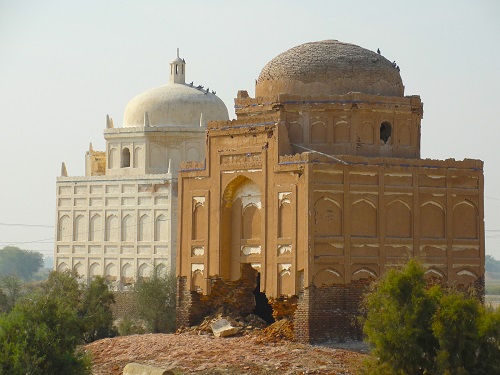
Timur Shah Durrani (d. 1793) probably returned with a promise of annual tribute by Mian Abdul Nabi Kalhoro (d. 1805). The Kalhoras used to pay them annually, failing which brought Mian Izzatyar Khan Kalhoro to their attention and they issued a decree in his favour as king of Sindh. Mir Bijar Khan Talpur (d. 1780) dealt with the situation very wisely and saved Sindh from further bloodletting and plundering by the Afghan forces. It was due to his sincere efforts and sagacious communications with the Afghan king that bloodletting was averted.
In an earlier conflict in 1193 AH / 1779 AD between the Sindhi army and Afghan forces, many soldiers on both sides were killed. A few Thaheem nobles were also killed in that battle. According to Henry Cousens (1998), the author of Antiquities of Sind, Thaheem nobles were killed in a battle that was fought between Kalhoras and Pathans (Afghans). Later, he believes that their tombs were built by their wives in 1781 AD.
There are four tombs in the necropolis of the Thaheem tribe which are locally called Bohi Quba. These tombs are located between Dakhan and Ratodero in Garhi Yasin taluka. Three tombs belong to Thaheem nobles, two of
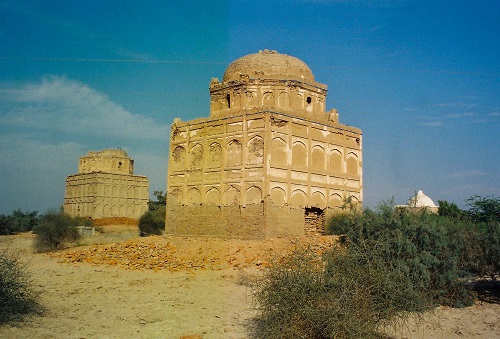
them to Sahib Khan and Dilawar Khan who died in the Kalhora-Afghan battle. The third tomb belongs to Jalal Khan Thaheem which, according to Henry Cousens, is older than the two other tombs in the necropolis. Mahdi Shah (2005:283-284), an eminent historian of Shikarpur, writes in his book Abro Wad Waro, that the tomb belongs to Jalal Khan Abro, not to Jalal Khan Thaheem.
According to Mahdi Shah’s research, Jalal Kahn Abro died in 1080 AH/1669 AD. Nazir Shakir Brohi (2005:571), another eminent historian of Shikarpur, writes in the article Naushahro Abro that was published in the edited book Sindh Je Tarekhi Shahran Ji Tarikh (A history of Sindh’s historic Towns) by Dr. Anwar Figar Hakro that he died in 1666-67. Jalal Khan Abro was chief of the Abra tribe who founded Jalalpur village later his son Fateh Khan (d.1680) who became chief of the tribe founded a village near Jalalpur which came to be called Naushahro Abro. Nazir Shakir Brohi (2005:572) believes that one hears about Naushahro Abro first time in 1731 AD during the reign of Mian Noor Muhammad Kalhoro (r.1719-1753). He gives a reference to a sanad dated Rabi ul Awwal 1144 AH / September 1731, in which the name “Taluka Naushahro Abro” was first used.
I will discuss further the history of Naushahro Abro and the Abra tribe in another article that I am writing on the historic Tarai village.
Whether it belongs to Jalal Khan Thaheem or Jalal Khan Abro, it is noted for its architecture and beautiful painted murals which are now in a bad state of preservation. The fourth tomb in the necropolis belongs to Syed Jaffar Shah who was the patron saint of the Thaheem tribe. Except for the tomb of Syed Jaffar Shah, all three tombs are noted for their grandeur. Henry Cousens (1998) writes that all three tombs were noted for lanterns that surmounted the domes. Ornamental lanterns were the distinctive features of Kalhora period tombs and mosques. All three tombs are built in square plan and are painted from the inside. The dome of one of the tombs has caved in.
Apart from Bohi Quba or the necropolis of the Thaheem tribe, there is another cemetery of Pir Qaim Shah, where such Kalhora soldiers and nobles were buried who died in a battle, fought either against Afghans or Kalhora forces themselves. This necropolis contains several communal graves of those fallen soldiers that are locally called Ganj. This necropolis is located about 1 km east of Naushahro Abro village. Almost all the graves have now deteriorated due to saline conditions.
_____________________
 Dr. Zulfiqar Ali Kalhoro, an anthropologist, has authored 13 books: ‘Symbols in Stone: The Rock Art of Sindh’, ‘Perspectives on the art and architecture of Sindh’, ‘Memorial Stones: Tharparkar’ and ‘Archaeology, Religion and Art in Sindh’. He may be contacted at: zulfi04@hotmail.com
Dr. Zulfiqar Ali Kalhoro, an anthropologist, has authored 13 books: ‘Symbols in Stone: The Rock Art of Sindh’, ‘Perspectives on the art and architecture of Sindh’, ‘Memorial Stones: Tharparkar’ and ‘Archaeology, Religion and Art in Sindh’. He may be contacted at: zulfi04@hotmail.com
Courtesy: The Friday Times Naya Daur Lahore (Published on January 10, 2023)